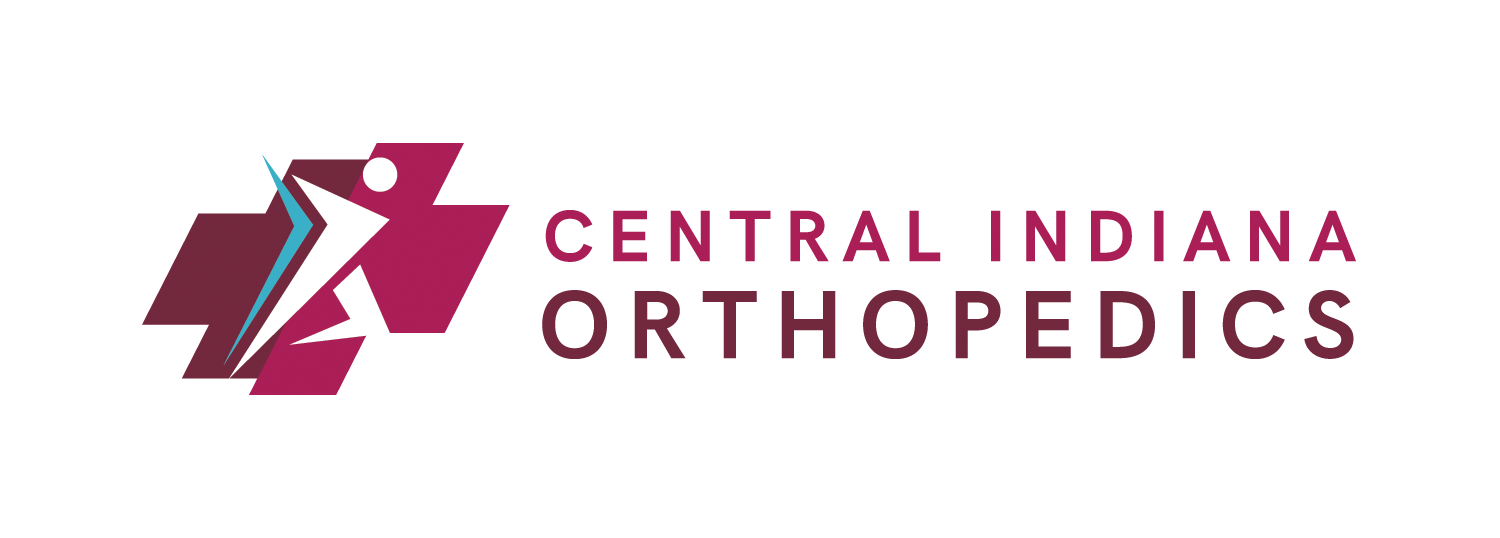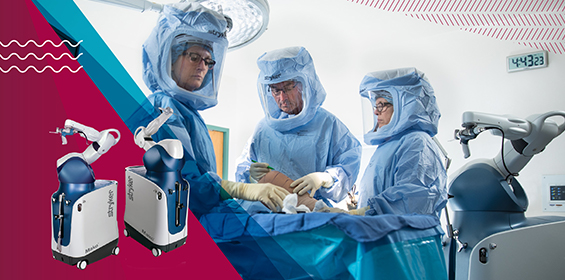April is National Thought Leadership and Innovation Month, so what better time to spotlight Mako SmartRobotics™, an innovative surgical tool that helps those suffering from painful arthritis of the knee or hip and enables patients to have a more predictable experience when undergoing a total or partial knee replacement, or total hip replacement. Central Indiana Orthopedics was the first orthopedic practice in the region to utilize Mako SmartRobotics, and we are proud of our leadership in providing state-of-the-art and personalized care to all of our patients. To date, we’ve helped over 1,000 patients get back to doing what they love with Mako-assisted surgeries.
At CIO, we are committed to staying current with innovative technologies that provide better outcomes for our patients. We’ve been using Mako technology since 2016 when we installed our first robot in our Muncie outpatient surgery center. Seeing the surgical benefits firsthand and how pleased our patients were with their Mako joint replacement surgeries, we added a second robot and placed it in our Fishers outpatient surgery center. As the orthopedic surgeons of Ascension St. Vincent Anderson and Fishers hospitals, our surgeons operate the robots purchased by the Anderson and Fishers hospitals, giving patients the option who need their hip or knee replacement performed in a hospital.
Compared to traditional joint replacements, Mako technology allows for implants to be placed in a perfect anatomic position for each patient, enabling better post-surgical movement and flexibility. Additionally, the surgeon is able to cut less bone, which causes fewer trauma and reduced risk of surgical complications. With fewer trauma, the patient typically experiences less pain, uses less pain medication and in general recovers quicker.
A joint replacement with Mako technology starts with the patient getting a CT scan of the affected joint and then the scan is loaded into a planning software, which allows the surgeon to map out a personalized surgical plan so they can know more about the patient’s anatomy before surgery. This allows the surgeon to have an exact 3D replica of the affected joint. That CT data is loaded into the robot prior to surgery for the surgeon to plan the procedure, allowing the surgeon to reference an exact 3D replica of the joint.
Once in surgery and the joint has been exposed, the surgeon uses a process called registration, which links the patient’s anatomy live to the CT scan loaded in the computer. It involves touching the bone around the joint in about 40-50 spots with a small device that the robot can see and registering those points. The points on the bone that have been identified tell the robot more about the patient’s unique anatomy. “The angle of your tibia and my tibia may be different,” said Dr. David Graybill, CIO joint replacement surgeon. “There has to be a very high degree of being able to individualize what we do. Mako technology can help bring us there.”
In the knee, this allows the surgeon to determine the best way to balance the ligaments prior to making bone cuts. In the hip, the surgeon can assess things before bone preparation to optimize position to reduce the risk of impingement, which can lead to dislocation. The surgeon gets objective data during the procedure to guide decisions, and the robotic arm allows the surgeon to execute this plan. “The robot allows me to prepare the bone in a perfect fashion and guides my cuts,” said Dr. Brent Damer, CIO joint replacement surgeon. “From an orthopedic standpoint, Mako is leading the way in terms of joint replacement technology.”
The surgeon is able to see virtually where to make cuts, position components, etc., before actually starting the procedure, so that’s what allows the surgeon to get the components in the perfect position, resulting in a safer procedure and minimal release of soft tissues. “The robotic arm has something called AccupStop haptic technology that allows a high degree of precision, approximately 1 mm or 1 degree of precision,” said Dr. Graybill. “If the surgeon is out of the pre-planned area during surgery, the device stops, which preserves tissue and saves healthy bone.”
During recovery, it’s important to note that every individual is unique and every treatment plan is different. General recovery times include in-hospital recovery for 1-4 days (unless it’s performed as outpatient), daily activities may be resumed 3-6 weeks following surgery and recovery to full activity is 6-12 months.
Anyone considering a hip or knee replacement could be a good candidate for Mako. If you’re suffering from chronic pain caused by arthritis, it’s important to have an open conversation with your orthopedic surgeon about treatment options. To schedule an appointment with one of our joint replacement surgeons, call 800-622-6575 or learn more about Mako at ciocenter.com/mako.

